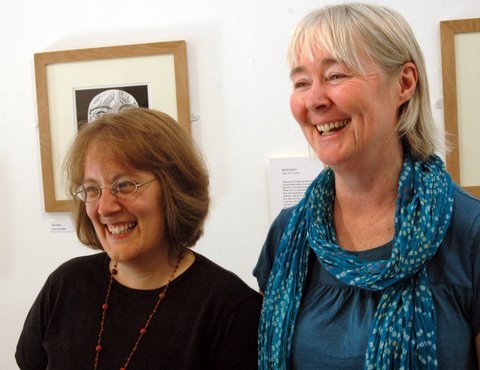And Everybody's Reading 2015 is the festival that keeps on giving. Last night it was an outstanding performance by Andrew MulletProof Graves in GOD SAVE THE TEEN, his new one-man show. The theatre of Upstairs at the Western was a Tardis-like revelation. When did a pub function room ever open into a packed auditorium, blacked-out and spot-lit for the coming spectacle? It proved the perfect intimate venue for this confessional tour of one boy's adolescence amongst the pit-town estates of Nottingham. Like old friends, we accompanied him from bullying flashback to dysfunctional family anecdote, from bus-stops to youth clubs, from just-left-home squats to the adult threshold of moving in with the Girlfriend. You never wanted more for the Boy to get the Girl.
 |
| Credit: http://upstairsatthewestern.com/wp-content/uploads/ |
It was my youth too - minus the testicle-punching at the back of the bus. I'm in awe of the way his monologue swooped on the turn of an 80s Single from gut-wrenching pathos to a broad all-embracing humour that warmed his audience. We laughed, we gasped, we reminisced and along the way we pondered big themes about family, life changes, class war and oppression. None of it preaching, just the home truths of Thatcherite Britain (and Blair's 90's homage to her) seeping through this intensely personal odyssey. Great characters illuminated this quiet epic, especially the beer-bellied single father who between mining shifts and terse one-liners was caught bopping to YMCA and faking a heart-felt Valentine.
 Sporting his trademark retro spiky hairdo and wry smile, Andrew MulletProof Graves delivered an understated nuanced performance with the easy presence of a seasoned pro. His beautifully crafted poems were slipped in to his narrative, so that you just realised the rhythms were a little more musical with pitch-perfect rhymes. I'd have liked the actual music transitions to have lasted a fraction longer - don't be afraid of the spaces - because we were entranced and lost in the moment as those hits kept on coming. The show benefitted from some deft direction by Rob Gees, no stranger to performance poetry storytelling himself. (You catch his Icarus show tonight at the same venue.) Keep an eye out for Mulletproof Graves' tour dates because this spoken word treat is not to be missed. And while you're at it, treat yourself to his debut poetry collection Light at the End of a Tenner which not only took me down the backstreets of his youth but to outer space along the way. I loved it.
Sporting his trademark retro spiky hairdo and wry smile, Andrew MulletProof Graves delivered an understated nuanced performance with the easy presence of a seasoned pro. His beautifully crafted poems were slipped in to his narrative, so that you just realised the rhythms were a little more musical with pitch-perfect rhymes. I'd have liked the actual music transitions to have lasted a fraction longer - don't be afraid of the spaces - because we were entranced and lost in the moment as those hits kept on coming. The show benefitted from some deft direction by Rob Gees, no stranger to performance poetry storytelling himself. (You catch his Icarus show tonight at the same venue.) Keep an eye out for Mulletproof Graves' tour dates because this spoken word treat is not to be missed. And while you're at it, treat yourself to his debut poetry collection Light at the End of a Tenner which not only took me down the backstreets of his youth but to outer space along the way. I loved it.




















